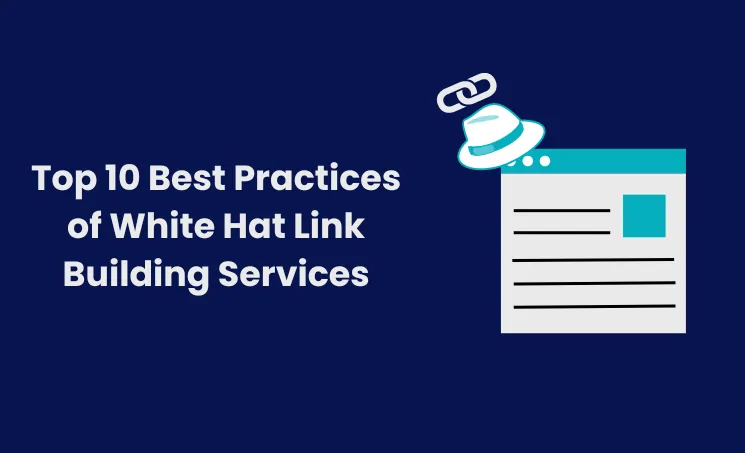In the ever-evolving landscape of SEO, white hat link building remains a critical off-page SEO strategy for improving website visibility and authority. Here’s how to master these tactics in 2024:
1. Create High-Quality Content That's Link-Worthy
Process of Create High-Quality Content
Identify Your Audience: Understand who you’re writing for and what they’re interested in.
Research Topics: Use tools like Google Trends, BuzzSumo, and Ahrefs to find trending topics with high potential for backlinks.
Content Creation: Produce original, informative, and engaging content. Whether it’s long-form articles, videos, or infographics, ensure it provides value.
Promotion: Share your content across social media, email newsletters, and other relevant platforms to increase its visibility.
2. Guest Blogging with a Purpose
Process for Guest Blogging
Find Guest Blogging Opportunities: Look for authoritative blogs in your niche that accept guest posts. Use search queries like “write for us” + your niche.
Pitch Your Ideas: Contact the site owners with a personalized email, proposing 2-3 topics that would add value to their audience.
Create Quality Content: Once approved, write a high-quality article that meets their guidelines, incorporating a link back to your site.
Follow Up: After publication, promote the post on your channels and keep in touch for future opportunities.
3. Use Resource Link Building
Process for Use Resource Link Building
Identify Resource Pages: To implement resource link building, search for pages that list resources in your niche using queries like “inurl:links” + your niche.
Evaluate the Page: Ensure the page is authoritative and relevant to your content.
Outreach: Contact the webmaster with a polite email, suggesting your content as an addition to their resource page.
4. Leverage Broken Link Building
Process for Leverage Broken Link Building
Find Broken Links: Use tools like Ahrefs or Dead Link Checker to find broken links on websites in your niche.
Create Replacement Content: If you don’t already have content that matches the broken link, create it.
Reach Out: Contact the site owner, inform them about the broken link, and suggest your content as a replacement.
5. Engage in Relevant Online Communities
Process for Engage in Relevant Online Communities
Identify Communities: Find forums, social media groups, and online platforms where your target audience hangs out.
Provide Value: Start by answering questions, offering advice, and sharing insights without self-promoting.
Share Relevant Content: Once you’ve established yourself, share your content when it directly answers a question or adds value to the conversation.
6. Build Relationships with Influencers
Process for Build Relationships with Influencers
Identify Influencers: Look for influencers within your niche with engaged audiences.
Engage with Their Content: Start by following them, commenting on their posts, and sharing their content.
Collaborate: Reach out with personalized proposals for collaboration with the influencers, such as guest posts, interviews, or joint webinars.
7. Utilize Internal Linking Wisely
Process for Utilize Internal Linking
Audit Your Content: To implement the internal linking strategy, use tools like Screaming Frog to analyze your current internal linking structure.
Identify Opportunities: Look for pages with high authority but few outbound internal links.
Implement Links: Add internal links using relevant anchor texts that guide users and search engines to related content on your site.
8. Create Infographics and Shareable Media
Process for Infographics and Shareable Media
Research Popular Topics: Use your niche’s popular topics as a basis for your infographics.
Design Your Infographic: Tools like Canva or Piktochart can help. Ensure your design is clear, informative, and engaging.
Promote Your Infographic: Share it on your website, social media, and infographic submission sites. You can also reach out to bloggers who might be interested in featuring it.
9. Monitor Your Backlink Profile
Process for Monitor Your Backlink Profile
Use SEO Tools: Tools like SEMrush, Ahrefs, or Google Search Console can help you monitor your backlink profile.
Analyze Your Links: Look for any spammy or low-quality links that could harm your SEO.
Disavow Bad Links: Use Google’s Disavow Tool to remove the harmful effects of any toxic backlinks.
10. Be Patient and Persistent
Set Realistic Goals: Understand that white hat link building is a long-term strategy.
Keep Consistent: Regularly produce quality content
Author
-
A Digital marketing expert with 2 Years of hands-on experience in On-page SEO, Off-page SEO, and WordPress. Currently working as a SEO Interim Manager at 7Eagles. He Completed his Master Degree MBA Specializing in Marketing and Finance. He has 2 Years of work experience in Digital Marketing Field. He Handled projects in Saas, Healthcare, Finance, Real-estate. He is strong on Handling Y.M.Y.L (Your Money Your Life) Niche projects.




